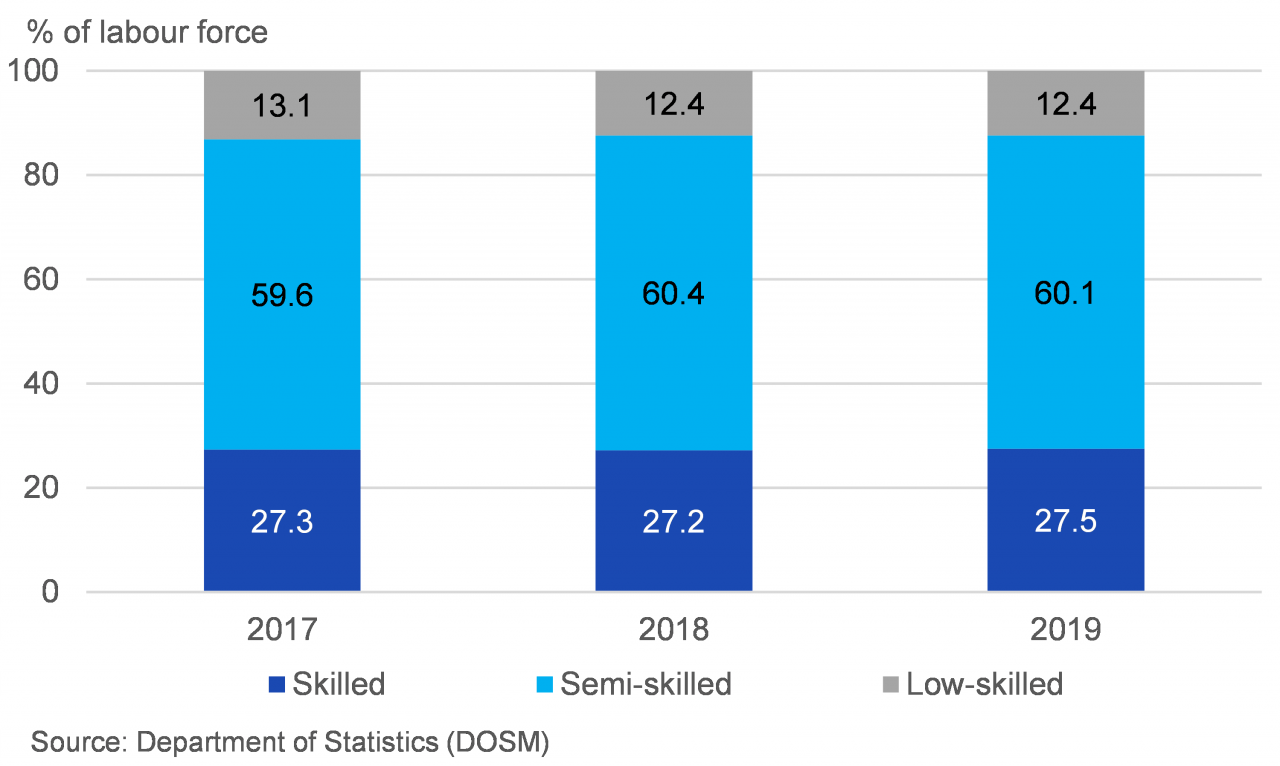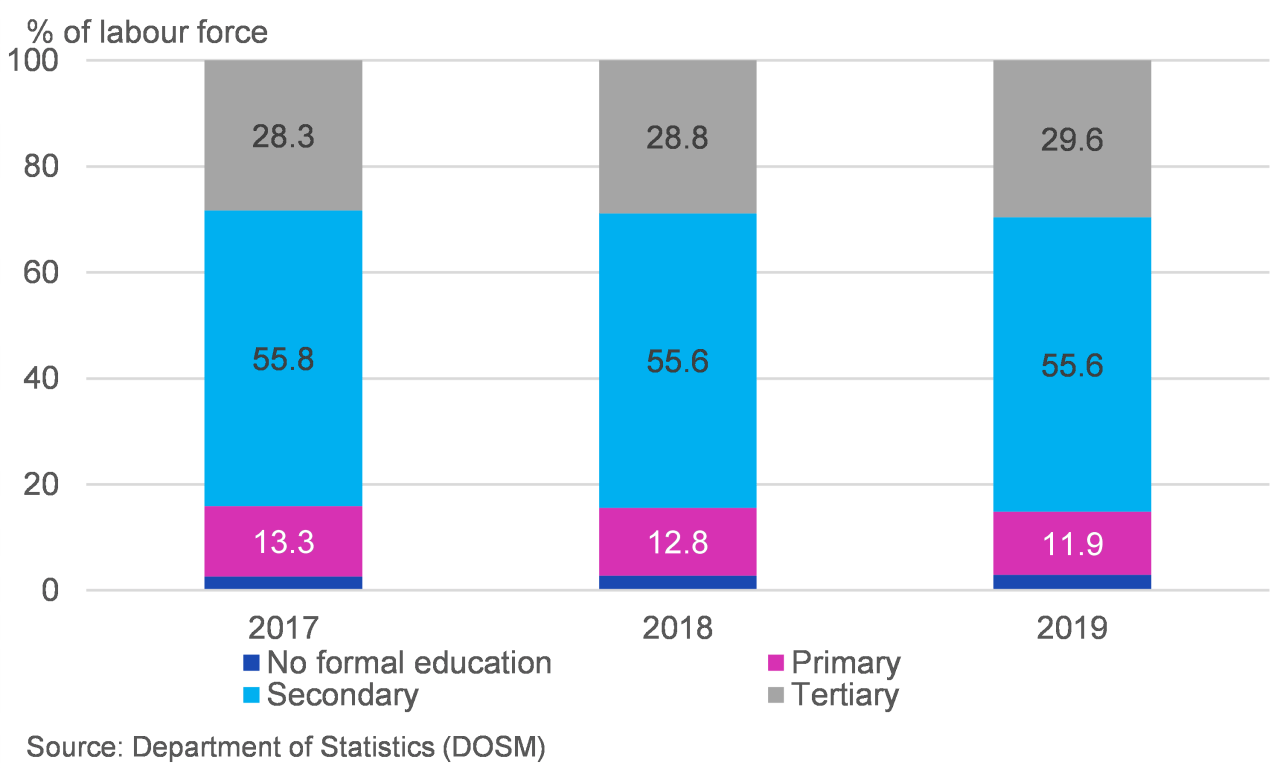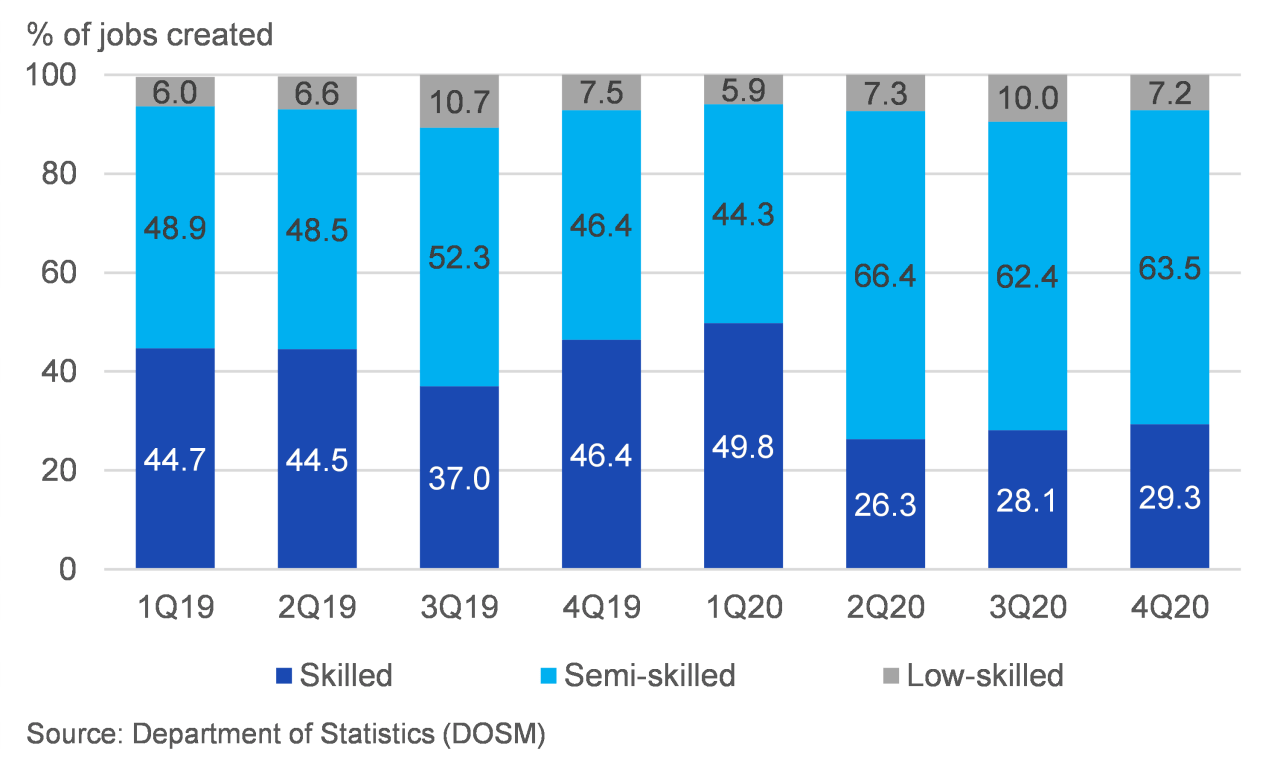By Research Analyst at EMIR Research, Sofea Azahar
As the frontier technologies start to take over humans’ lives and the process has been fastened by the Covid-19 Outbreak, there needs to be a balanced approach in trying to ensure that this does not lead to more socioeconomic problems like what we have seen in the past technological revolutions.
Human transformation must also take place so that the people would be at the heart of the revolution, not only for the benefit of some or for businesses to make profits – a concept introduced under Malaysia 5.0. To prevent ourselves from being colonised digitally, there is a critical need to focus on the core foundation of the society and that is the national education system.
Realistically, are Malaysian talents sufficiently equipped with the skills to face, navigate and thrive the new world that is driven by technologies?
According to the World Bank, the challenges associated to digital adoption are the weaknesses in the key complements like skills, rules, and institutions.
When talking about skills, majority in Malaysia’s labour force is skewed towards the semi-skilled level, based on the chart below. Although the share of skilled labour force has increased but the rise was not too significant.
Education background could play a part to why our labour force is concentrated in the semi-skilled group relatively to skilled group. Referring to the chart below, the largest share of Malaysia’s labour force accounts for those with secondary education. Thus, it is reasonable that graduating from this level of education would place them in the non-graduate jobs which are the semi-skilled and low-skilled jobs.
According to the Organisation for Economic Cooperation and Development (OECD), the number of students enrolled in tertiary education is an indicator of country’s future potential for skilled workforce.
Data from the World Bank shows that in 2019, the share of students enrolled in tertiary education in Malaysia stood at 43 percent, which was much lower than the enrolment rates in advanced countries such as South Korea (96 percent), Singapore (89 percent), Estonia and Germany (70 percent).
Another indicator that can be used to gauge where Malaysia is right now when it comes to education is the Programme for International Assessment (PISA) scores.
Based on the charts below, the scores of 15-year-old students for three core subjects needed to survive in the technological revolution – Mathematics, Science and Reading – were much lower than the scores of the advanced countries and even when compared with the OECD average.
Future of Jobs Survey 2020 conducted by the World Economic Forum (WEF) also shows that the top two perceived hindrances to companies adopting technologies are skills gap in the local labour market (55.4 percent) and inability to attract specialised talents (46.7 percent). This also helps to explain the worrying state of underemployment in our country as there is a mismatch between supply and demand in the labour market.
At the same time, we can also observe that the type of jobs created for the graduates are mostly semi-skilled and the number of skilled jobs created has been dropping (refer to the chart below), likely due to cost-cutting measures after the crisis caused by the Outbreak.
Recent statistics released by the Employee Insurance System (EIS), from January 1 to April 9, have shown that the highest number of vacancies in the job market is for the non-graduate jobs namely the elementary occupations (154,085) as well as service and sales workers (85,648), then only for the professionals (78,613) which is a graduate job.
Although the number of vacancies for professionals might look ample, they would not be able to match the rising number of graduates. As a result, plenty of graduates are left with no other choice but to take up the semi-skilled/low-skilled jobs to earn a living.
The challenging economic condition also makes it harder for the young graduates to seek for jobs which match their qualifications as they need to compete with the experienced jobseekers who have been laid off because of the economic crisis.
Subsequently, these situations would then affect existing and future workforce’s skills and become more exposed to risks of displacement given the rise of frontier technologies.
According to the World Economic Forum (WEF) report, technological adoption by companies will transform tasks, jobs and skills by 2025. Skills that would be highly in demand by the employers are critical thinking and analysis, problem-solving, self-management skills such as active learning, resilience, stress tolerance and flexibility, as well as technology use and development.
This tells us that the jobseekers or certain group of workers who do not possess these specific skills will likely be at a disadvantage.
So, these statistics should be the pushing factors to ensure that Malaysian talents are fully prepared to face and adapt to this transformation, and not excluded from any benefit. That is why it needs to start from the right education which reflects the ground reality beginning from a very young age.
In the framework of Malaysia 5.0 coined by the Chief Executive Officer (CEO) of an independent think-tank EMIR Research and the chairman of Malaysia Digital Economy Corporation (MDEC) Rais Hussin, one of the objectives is to integrate 4IR elements into the education syllabus as early as from primary school up to university and it should extend beyond what we have now which are the users of technologies. We need to produce creators of technologies too.
Besides that, we should not also forget the importance of humanities in producing talents who are justly balanced and flexible in terms knowledge to thrive in the new era, not only the experts of Science, Technology and Mathematics.
Thus, curriculum comprising STEM and non-STEM should be made compulsory for students in primary level, secondary level as well as tertiary level. This way, future talents won’t find it too hard to cope with the rapid change in industry demand that require specific skillsets, such as what has happened since the Outbreak struck.
Transformation and reformation of the national education system would undeniably take a long time to bear fruit but if this is taken seriously with urgency, many socioeconomic issues that we see now can be mitigated.













